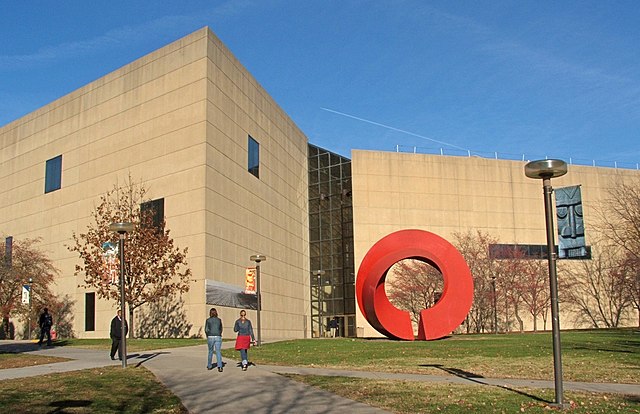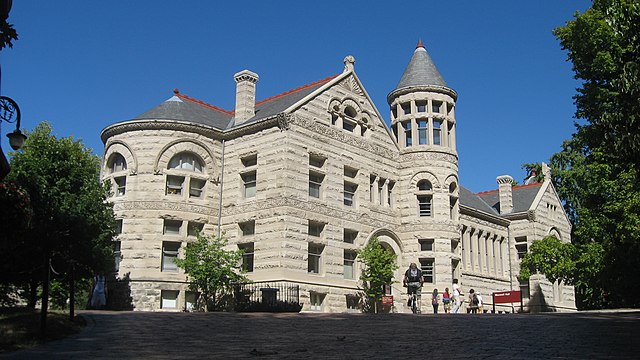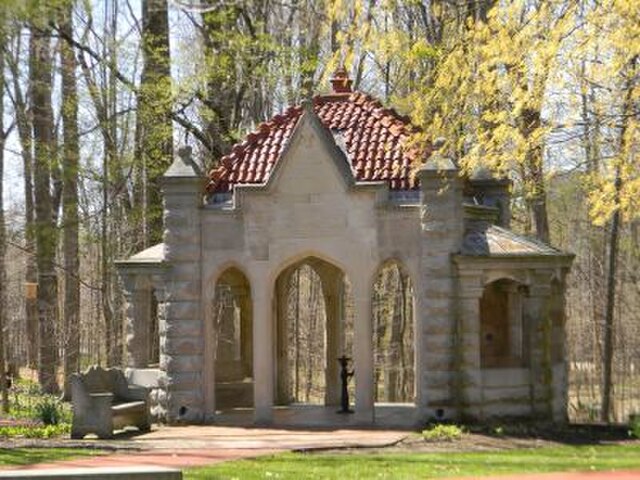The Sidney and Lois Eskenazi Museum of Art at Indiana University is an art museum at Indiana University Bloomington, which opened in 1941 as the Indiana University Museum of Art under the direction of Henry Radford Hope. The museum was intended to be the center of a “cultural crossroads,” an idea brought forth by then-Indiana University President Herman B Wells. The present museum building was designed by I.M. Pei and Partners and dedicated in 1982. The museum's collection comprises approximately 45,000 objects, with about 1,400 on display. The collection includes items ranging from ancient jewelry to paintings by Pablo Picasso and Jackson Pollock. In May 2016, after the announcement of the largest cash gift in the museum's history, the museum was renamed the Sidney and Lois Eskenazi Museum of Art in honor of Indianapolis-based philanthropists Sidney and Lois Eskenazi. The museum is located on the Indiana University Bloomington campus at 1133 E. Seventh Street.
Eskenazi Museum of Art
Cycladic, attributed to the Goulandris Master. Woman, ca. 2500-2400 BCE. Eskenazi Museum of Art, Indiana University, 76.25
Late fourth-century BCE Greek red-figure volute krater. Eskenazi Museum of Art, Indiana University
Roman, after Greek original by Praxiteles. Torso with Panther Skin, 100-200 CE. Marble, 33 1/2 x 20 1/2 x 11. Gift of Mr. and Mrs. James Adams and Dr. and Mrs. Henry R. Hope in memory of George Heighway, Eskenazi Museum of Art, Indiana University, 64.104
Indiana University Bloomington
Indiana University Bloomington is a public research university in Bloomington, Indiana. It is the flagship campus of Indiana University and its largest campus with over 40,000 students. Established as the state's seminary in 1820, the name was changed to "Indiana College" in 1829 and to "Indiana University" in 1838.
Maxwell Hall
The Sample Gates, the main entrance to the Indiana University Bloomington Campus
Morrison Hall in June 1942
Rose Well House, 2016








